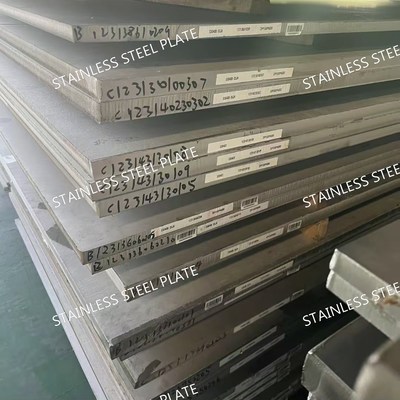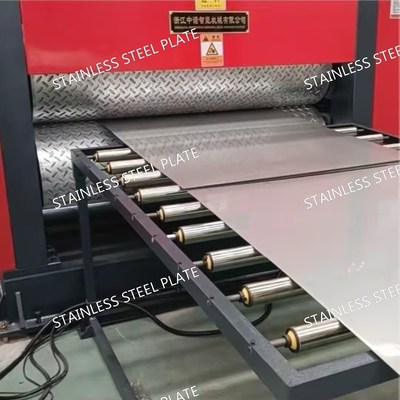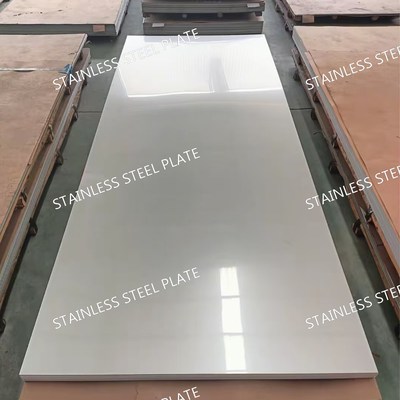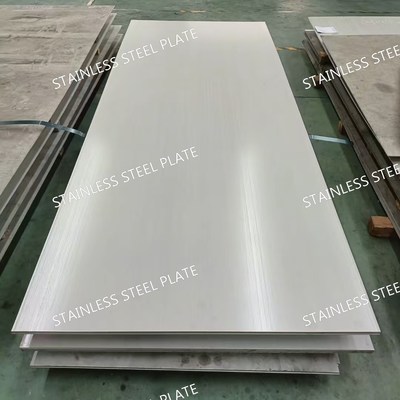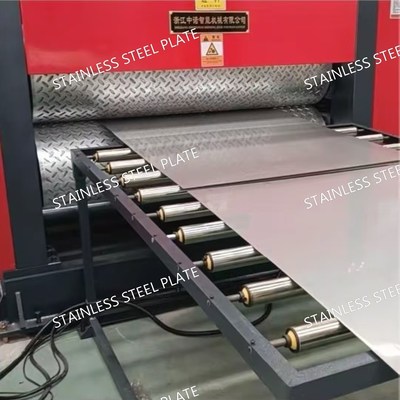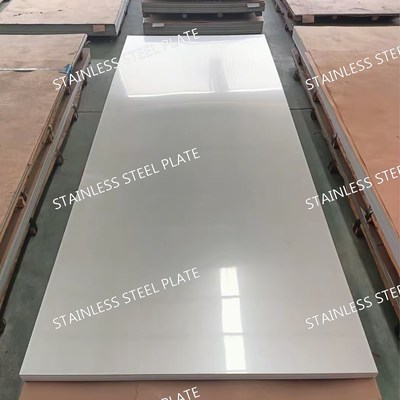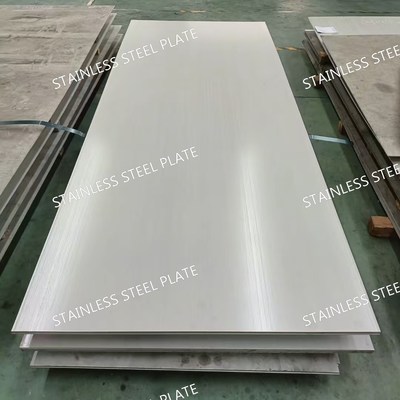-
Прокладка нержавеющей стали
-
Лист нержавеющей стали
-
Плита нержавеющей стали
-
труба нержавеющей стали
-
Адвокатура нержавеющей стали
-
Гальванизированная стальная катушка
-
Стальная пластина
-
стальной круглый бар
-
сплав никеля
-
Безшовная стальная труба
-
Луч нержавеющей стали
-
Лист медной плиты
-
Медная круглая Адвокатура
-
 Raian IonescuМатериальное качество очень хорошее. мы имеем объединить больше чем 10 лет. Они торгуют видами серий стального материала. Полностью материальное качество хорошее. Они обязанность для полностью материального качества. Мы строгаем для того чтобы продолжать объединить с ними в будущем
Raian IonescuМатериальное качество очень хорошее. мы имеем объединить больше чем 10 лет. Они торгуют видами серий стального материала. Полностью материальное качество хорошее. Они обязанность для полностью материального качества. Мы строгаем для того чтобы продолжать объединить с ними в будущем
Stainless Steel Plate 329 Heat and Corrosion Resistant, Engineered for Tough Applications
| Место происхождения | Китай |
|---|---|
| Фирменное наименование | BAOSTEEL TISCO |
| Сертификация | ISO |
| Номер модели | 329 / С32900 |
| Количество мин заказа | 50 кг |
| Цена | 5 - 8 USD/Kg |
| Упаковывая детали | стандартная упаковка для экспорта |
| Время доставки | 5 - 12 дней на основе количества |
| Условия оплаты | Л/К, Т/Т, Вестерн Юнион |
| Поставка способности | 20ton в неделю |

Свяжитесь я бесплатно образцы и талоны.
Whatsapp:0086 18588475571
Wechat: 0086 18588475571
Skype: sales10@aixton.com
Если вы имеете любую заботу, то мы предусматриваем 24-часовую интерактивную справку.
x| Продукты | листы из нержавеющей стали | Оценка | 329 / С32900 |
|---|---|---|---|
| Толщина | 1,0-80,0 мм | Технический | холоднокатаный, горячекатаный, кованый |
| Ширина | 1000mm 1219mm 1500mm или таможни как запрос | Поверхность | 2B БА No.1 |
| Стандартный | DIN EN ASTM GB JIS | минимальный заказ | 1 тонна |
Stainless Steel Plate 329 Heat and Corrosion Resistant, Engineered for Tough Applications
Stainless Steel Sheet Specifications
| Name | 329 stainless steel Plate |
| Our Grade |
200 Series: 201 202 300 Series: 301 304,304L,304H,309S,310S,314,316L,316Ti,316H,316LN,317L,321,329,347 400 Series: 409L,410,410S,416,420,430,431,436L.439,441,443,444,445,446 Super Stainless Steel: 904L,926,254SMO,654SMO,15-5PH,17-4PH,17-7PH.etc Nickel Alloy: C276, C22,G35,Alloy X,Monel 400,K500,Inconel 600,601,617,625,718,Incoloy 800,800H,800HT,825.etc |
| Technique | Hot Rolled, Cold Rolled,Forged |
| Standard | JIS, AISI, ASTM, DIN, TUV, BV, SUS, etc |
| Thickness | 0.1 – 80.0mm |
| Width range | 10mm – 2000mm |
| Length | Customized |
| Finish | 2B, BA, No.4, 8k, Brushed,Hairline,PVD Coating,Sandblasted |
| Service | Laser Cutting, Bending |
| Sample | Available |
Stainless Steel Plate 329 Heat and Corrosion Resistant, Engineered for Tough Applications
The 329 Stainless Steel Plate is a high-performance alloy designed to provide excellent resistance to both heat and corrosion. This steel grade is primarily used in environments where the material is exposed to aggressive conditions such as high temperatures, oxidizing environments, and chemical exposure. This article will provide an in-depth look into the properties of 329 stainless steel, including its chemical composition, mechanical properties, standards, applications, and related products.
1. Chemical Composition of 329 Stainless Steel
329 stainless steel is a duplex stainless steel alloy, meaning it has a two-phase microstructure consisting of both austenitic and ferritic phases. This unique microstructure contributes to its enhanced mechanical properties, especially in terms of strength and resistance to corrosion. The primary alloying elements in 329 stainless steel are chromium (Cr), nickel (Ni), and molybdenum (Mo), which contribute to its resistance to oxidation and corrosion.
Below is the typical chemical composition of 329 stainless steel:
| Element | Content (%) |
|---|---|
| Carbon (C) | ≤ 0.03 |
| Manganese (Mn) | 2.00 – 3.50 |
| Silicon (Si) | ≤ 1.00 |
| Chromium (Cr) | 24.00 – 26.00 |
| Nickel (Ni) | 4.50 – 6.50 |
| Molybdenum (Mo) | 1.50 – 3.00 |
| Phosphorus (P) | ≤ 0.045 |
| Sulfur (S) | ≤ 0.03 |
| Nitrogen (N) | ≤ 0.10 |
| Iron (Fe) | Balance |
-
Chromium: Provides excellent oxidation and corrosion resistance.
-
Nickel: Improves toughness, corrosion resistance, and overall strength.
-
Molybdenum: Enhances resistance to pitting and crevice corrosion in chloride-rich environments.
-
Nitrogen: Increases strength and improves resistance to stress corrosion cracking.
The relatively low carbon content makes the alloy resistant to carbide precipitation, which is beneficial in high-temperature applications.
2. Mechanical Properties of 329 Stainless Steel
329 stainless steel exhibits a blend of high strength and good corrosion resistance, making it suitable for demanding applications. The alloy's mechanical properties are typically as follows:
| Property | Value |
|---|---|
| Tensile Strength (MPa) | 620 – 860 |
| Yield Strength (MPa) | 310 – 520 |
| Elongation (% in 50 mm) | 40 – 50 |
| Hardness (Rockwell B) | 90 – 95 |
| Modulus of Elasticity (GPa) | 200 |
| Poisson’s Ratio | 0.3 |
| Density (g/cm³) | 7.80 |
-
Tensile Strength: 329 stainless steel has high tensile strength, which makes it ideal for applications where high loads are expected.
-
Yield Strength: It offers excellent resistance to deformation under stress, ensuring it can handle mechanical loads without yielding.
-
Elongation: The material maintains good ductility, ensuring it can undergo deformation before breaking, which is essential in applications where impact or high deformation may occur.
These mechanical properties make 329 stainless steel suitable for demanding applications in industries like petrochemical, food processing, and marine environments.
3. Standards for 329 Stainless Steel
The 329 stainless steel grade complies with various international standards, which govern its composition, mechanical properties, and manufacturing processes. The key standards for this material include:
-
ASTM A240/A240M: Standard Specification for Chromium and Chromium-Nickel Stainless Steel Plate, Sheet, and Strip for Pressure Vessels and for General Applications.
-
ASTM A276: Standard Specification for Stainless Steel Bars and Shapes.
-
UNS S32900: The Unified Numbering System (UNS) designation for 329 stainless steel, which is widely used for alloy identification.
-
EN 1.4462: European standard for duplex stainless steels, specifying requirements for 329 stainless steel.
These standards ensure that the material adheres to strict quality controls, guaranteeing its suitability for a wide range of applications.
4. Similar Grades to 329 Stainless Steel
329 stainless steel is a specialized alloy, but several similar stainless steel grades provide comparable performance in specific environments. Some of the closely related grades include:
-
Grade 2205 (UNS S32205): Another duplex stainless steel, 2205 is commonly used for its superior strength and corrosion resistance, especially in aggressive chloride environments.
-
Grade 304 (UNS S30400): Although primarily austenitic, 304 stainless steel offers good corrosion resistance but is not as strong or resistant to high temperatures and chloride environments as 329.
-
Grade 310 (UNS S31000): A high-temperature-resistant austenitic stainless steel, 310 excels in high-heat applications but does not offer the same duplex structure as 329, making it less resistant to stress corrosion cracking.
Comparing these grades with 329, each has its strengths depending on the specific application and environmental factors, such as temperature, chemical exposure, and mechanical load.
5. Applications of 329 Stainless Steel
329 stainless steel’s unique combination of heat and corrosion resistance, along with its strength, makes it ideal for demanding applications across various industries. Some of the primary applications include:
-
Heat Exchangers: 329 is commonly used in heat exchangers where resistance to both high temperatures and corrosion is critical.
-
Chemical Processing Equipment: This alloy is ideal for handling aggressive chemicals and acids, making it perfect for reactors, piping, and tanks in the chemical industry.
-
Marine and Offshore Equipment: Due to its corrosion resistance in seawater, 329 stainless steel is commonly used in the marine industry for components such as hulls, propellers, and shafts.
-
Food Processing and Pharmaceutical Equipment: The alloy’s non-reactivity and ease of cleaning make it suitable for environments that require stringent hygiene and corrosion resistance.
-
Power Plants: 329 stainless steel is often used in components of power plants that are exposed to high temperatures, such as turbine blades, furnace components, and flue gas systems.
-
Aerospace Components: 329 is also used in high-performance aerospace applications due to its high strength and heat resistance.
6. Other 329 Stainless Steel Products
In addition to stainless steel plates, 329 alloy is available in a variety of forms to suit different applications:
-
329 Stainless Steel Bars and Rods: These are used in shafts, rods, and mechanical components that require superior mechanical properties and resistance to corrosion.
-
329 Stainless Steel Tubes and Pipes: Widely used in chemical processing and heat exchangers, these products benefit from the alloy's ability to withstand both high temperatures and aggressive chemical environments.
-
329 Stainless Steel Wire: Used for manufacturing springs, fasteners, and other small components that need to retain strength in high-temperature and corrosive conditions.
These products expand the versatility of 329 stainless steel in various industrial sectors.
Conclusion
329 Stainless Steel Plate stands out as an excellent choice for industries requiring materials that can endure both high temperatures and harsh, corrosive environments. Its unique duplex microstructure, which combines both ferritic and austenitic phases, gives it superior strength, toughness, and resistance to oxidation. Whether it's for chemical processing, marine applications, or heat exchangers, the material’s versatility and resilience make it indispensable in challenging environments.
With its excellent mechanical properties and high resistance to corrosion and heat, 329 stainless steel continues to be an essential material for industries that demand reliability, performance, and longevity in their equipment.
![]()
![]()
![]()
![]()



